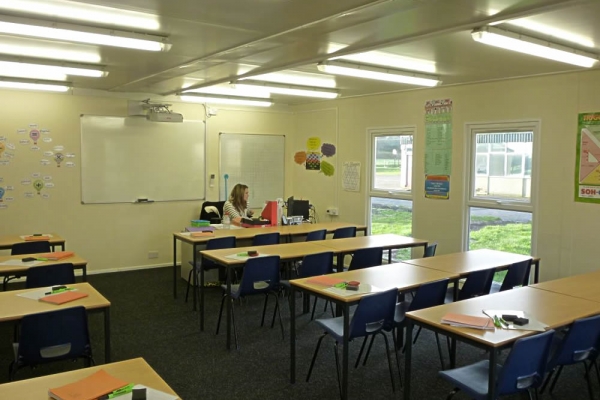The high birth rate in the UK has led to a huge shortage of school places. This has placed enormous pressure on councils and the education sector to provide more educational buildings. In a similar vein, universities are seeing a higher intake of students, partly due to the government’s recent removal of the cap on student numbers. This has created great demand for more facilities and resources.
From nurseries and schools to colleges and universities, the education sector is increasingly investing in modular buildings as an innovative and long-lasting solution. Let’s consider some of the ways in which modular buildings can benefit the education sector:
Functionality and Affordability
Modular buildings are quick and cost-effective to produce, resulting in minimal disruption to lessons. Lower costs and construction times can be achieved, without compromising on the quality and function of the buildings. Structures can be as attractive and durable as conventional buildings; they can also include the same great facilities, such as IT systems.

Flexibility
One of the greatest advantages that modular buildings have over conventional buildings is their flexibility. Modular buildings come in a wide variety of styles and configurations. The range of external finishes means that new constructions can be designed to match existing structures. Meanwhile, a variety of internal options for customisation ensure that your building is fit for purpose.
Modular designs can be adapted according to need. For example, more storeys can be added to a building in the future. Similarly, temporary structures can be moved to other sites if necessary. This is highly advantageous in the education sector, where demand for more places is growing year-on-year.
Convenience
From design through to completion, modular buildings can be completed much faster than conventional structures. Most of the building is produced in a factory and then brought to the site, reducing construction times by as much as half when compared to traditional building methods.
Buildings can be designed and manufactured off-site during term time, then installed during the holidays to minimise disruption. Most of the assembly can also take place irrespective of weather conditions, which increases efficiency and prevents potential damage. With shorter construction times and little on-site waste, there is far less disturbance for both staff and students.
Environmental Impact
Modular construction creates less waste and disturbance than structures assembled from the ground up. It is eco-friendly, generally using fewer materials than traditional builds. Prefabs can also be fitted with energy efficient appliances, and made from recycled materials. This can help to reduce both emissions and running costs.
With increasing demands placed on the education sector, modular buildings are the most cost-effective and versatile means of expansion. Modular structures provide affordable, contemporary and functional spaces that also comply with building regulations. It is therefore hardly surprising that many educational establishments are forgoing traditional building in favour of a more flexible alternative.
As detailed above, the modular building approach can solve both your short-term and long-term accommodation needs in the education sector.
This article was written by Kelly Gilmour Grassam with useful information from Thurston Group. Kelly is a Yorkshire girl who writes for a living, how cool is that? She loves eating amazing food in interesting places.



